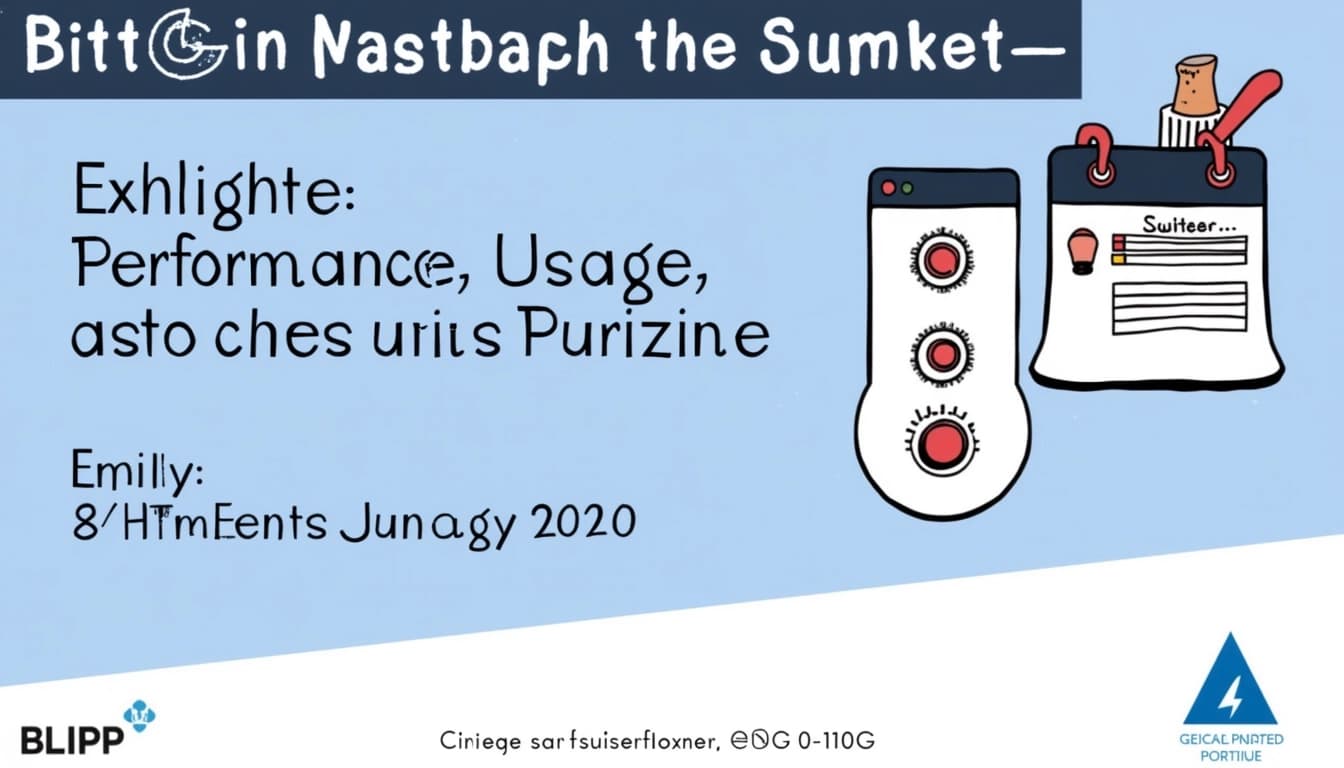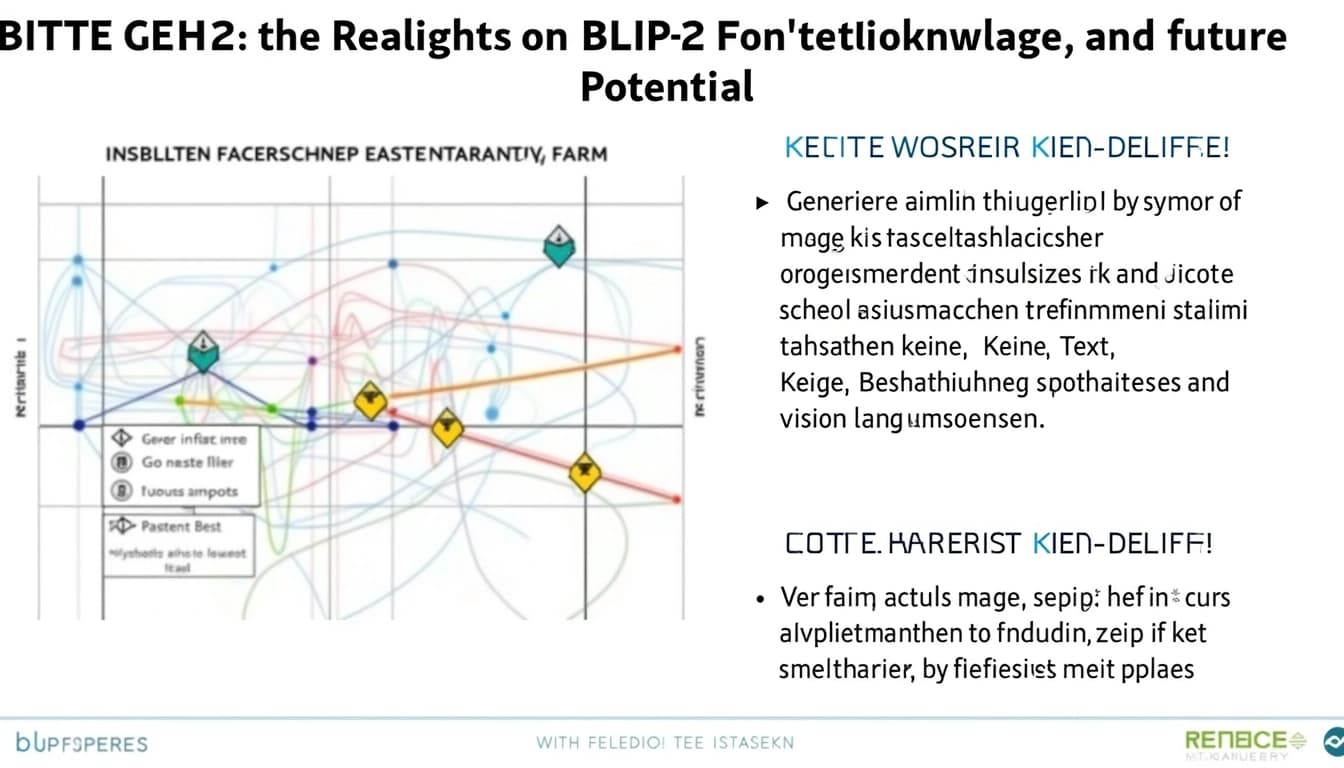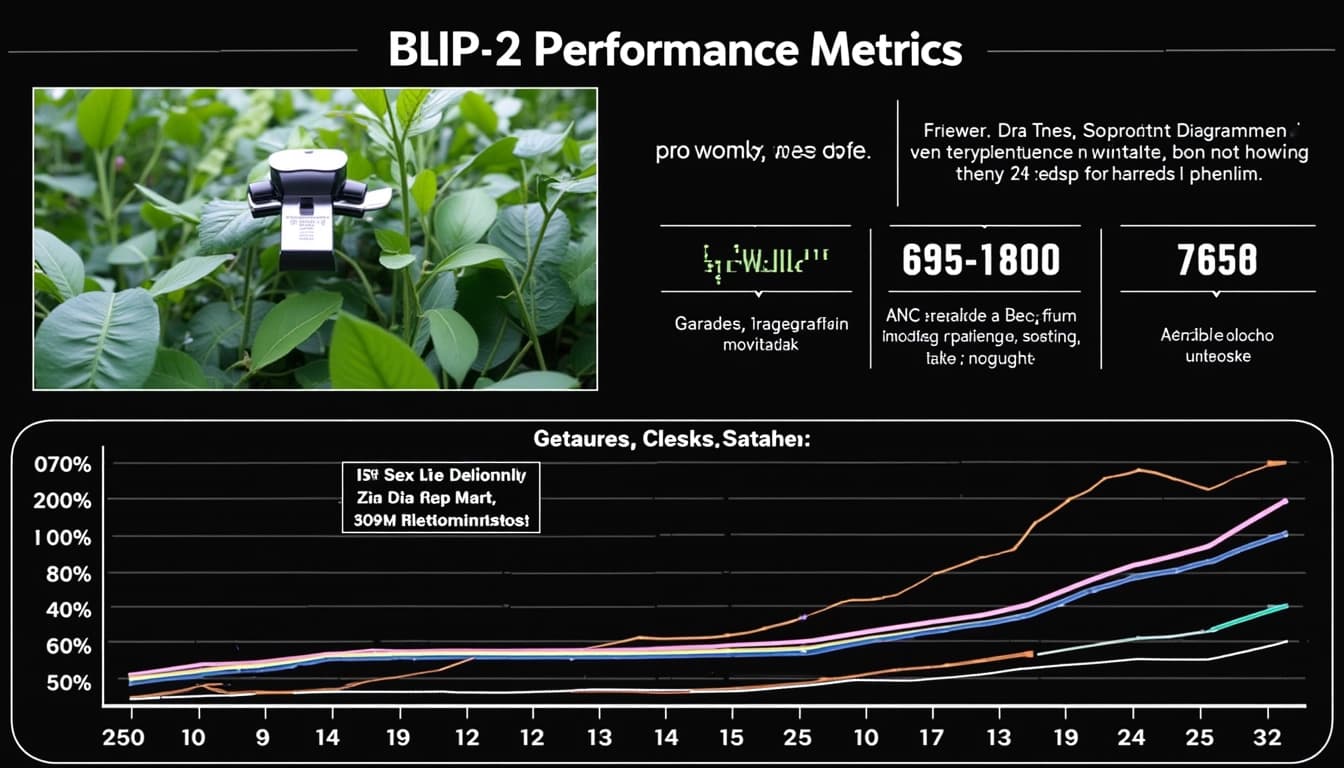
Key Insights on BLIP-2: Performance, Usage, and Future Potential
By John Doe 5 min
Key Points
- Research suggests BLIP-2 is a leading model for image captioning, using pre-trained components for efficiency.
- It seems likely that BLIP-2 performs well on standard benchmarks like COCO, with CIDEr scores around 145.
- The evidence leans toward BLIP-2 being versatile, supporting zero-shot generation without fine-tuning.
- An unexpected detail is its use of frozen models, reducing training costs while maintaining high performance.
What is BLIP-2 and How Does It Work?
BLIP-2, developed by Salesforce, is a vision-language pre-training model designed for tasks like image captioning. It uses a frozen image encoder, such as a Vision Transformer (ViT), and a frozen large language model (LLM) like OPT or FlanT5, connected by a lightweight Querying Transformer (Q-Former). This setup allows it to generate textual descriptions of images efficiently, leveraging pre-trained models to save computational resources.
Performance and Usage
BLIP-2 excels on the COCO dataset, achieving CIDEr scores around 145, outperforming many traditional models. It can generate captions zero-shot, meaning it works without specific training on captioning datasets, making it versatile for various applications. Users can implement it using the Hugging Face library, with a simple code example involving loading the model and processing images to generate text.
Limitations and Future Potential
While efficient, BLIP-2 depends on the quality of pre-trained models, which may introduce biases. It requires significant computational resources for real-time use and may struggle with out-of-domain images. Future research could enhance its adaptability for few-shot learning and extend to video captioning.
Detailed Analysis
BLIP-2 stands as a pivotal advancement in image captioning, merging computer vision and natural language processing to generate descriptive text from visual inputs. This section delves into its architecture, training, performance, and practic
Image captioning involves creating textual descriptions for images, a task critical for accessibility, search enhancement, and content moderation. It faces challenges like understanding complex scenes, handling language variability, and ensuring efficiency, making advanced models like BLIP-2 essential.
Traditional Approaches to Image Captioning
Historically, image captioning relied on convolutional neural networks (CNNs) for feature extraction, paired with recurrent neural networks (RNNs) or long short-term memory (LSTMs) for text generation. Transformer-based models, using Visual Transformers (ViT), have improved performance but often require extensive end-to-end training, limiting generalization and efficiency.
Introduction to BLIP-2
BLIP-2, introduced by Salesforce, is a vision-language pre-training method that leverages frozen pre-trained image encoders and large language models (LLMs). Its key advantage is efficiency, using pre-trained components to reduce training costs while achieving state-of-the-art results. Unlike traditional models, it employs a modular design, focusing on transfer learning and two-stage training for enhanced versatility.
Architecture of BLIP-2
BLIP-2's architecture comprises three main components: a frozen image encoder, typically a pre-trained Vision Transformer (ViT), a frozen large language model (LLM) like OPT or FlanT5, and a Querying Transformer (Q-Former). The Q-Former bridges the modality gap between vision and language, using learnable query embeddings to extract relevant visual features for the LLM.
Frozen Image Encoder
The frozen image encoder, such as ViT-L/14 from CLIP or ViT-g/14 from EVA-CLIP, extracts visual features from the input image. These features are then processed by the Q-Former to generate queries that the LLM can understand and use for caption generation.
Frozen Large Language Model (LLM)
The frozen LLM, such as OPT or FlanT5, handles the text processing and generation. By keeping the LLM frozen during training, BLIP-2 reduces computational costs and leverages the pre-trained knowledge of the LLM for better performance.
Querying Transformer (Q-Former)
The Q-Former is a lightweight 12-layer Transformer encoder initialized with BERT_base weights. It uses 32 learnable query embeddings to bridge the gap between the visual features extracted by the image encoder and the text generation capabilities of the LLM.
Conclusion & Next Steps
BLIP-2 represents a significant advancement in image captioning by efficiently leveraging pre-trained models and reducing training costs. Future research could explore further optimizations in the Q-Former design or the integration of even larger LLMs to improve caption quality and versatility.
- BLIP-2 uses frozen pre-trained models for efficiency.
- The Q-Former bridges the gap between vision and language.
- Future work could explore larger LLMs for better performance.
BLIP-2 represents a significant advancement in vision-language pre-training by introducing a novel approach that bridges vision and language models efficiently. The model leverages frozen pre-trained image encoders and large language models (LLMs) to achieve state-of-the-art performance with minimal trainable parameters. This efficiency is particularly notable given the high computational costs typically associated with training large multimodal models.
Key Innovations of BLIP-2
BLIP-2 introduces a lightweight Querying Transformer (Q-Former) that acts as a bridge between frozen vision and language models. The Q-Former is trained in two stages: first, to align visual features with text embeddings, and second, to adapt the vision model to the language model's input space. This two-stage approach allows BLIP-2 to achieve strong performance without the need for end-to-end fine-tuning of the entire model.
Efficiency in Parameter Usage
One of the standout features of BLIP-2 is its ability to achieve high performance with significantly fewer trainable parameters compared to other models. For instance, BLIP-2 with ViT-g and OPT-2.7B achieves a CIDEr score of 145.8 on image captioning tasks, matching or surpassing larger models like OFA and SimVLM. This efficiency makes BLIP-2 a practical choice for real-world applications where computational resources are limited.
Performance Benchmarks
BLIP-2 has been evaluated on multiple benchmarks, including image captioning and visual question answering (VQA). The model consistently outperforms or matches the performance of larger models while using fewer trainable parameters. For example, in the NoCaps benchmark, BLIP-2 achieves a CIDEr score of 145.8, demonstrating its capability to generate high-quality captions.

Practical Implementation
BLIP-2 is designed for ease of use, supporting zero-shot image-to-text generation out of the box. Developers can quickly integrate the model into their applications using libraries like Hugging Face. The model's ability to generate captions or answer questions about images without additional fine-tuning makes it highly versatile for various use cases.
Limitations and Future Directions
Despite its strengths, BLIP-2 has some limitations. The model's performance is dependent on the quality of the frozen pre-trained models it uses, which may inherit biases or limitations from their original training data. Additionally, BLIP-2 may struggle with out-of-domain images, such as medical or abstract art, where the pre-training data may not be representative.

- Dependency on pre-trained models may introduce biases.
- Computational resources are still significant for real-time applications.
- Out-of-domain performance can be inconsistent.
BLIP-2 represents a significant advancement in image captioning, leveraging frozen pre-trained image encoders and large language models to achieve state-of-the-art performance. This approach minimizes computational costs while maintaining high accuracy, making it a practical solution for various applications. The model's ability to generate descriptive and contextually relevant captions without extensive fine-tuning sets it apart from traditional methods.
Innovative Architecture of BLIP-2
BLIP-2 introduces a novel architecture that bridges the gap between vision and language models through the Q-Former. This lightweight transformer effectively aligns visual features from frozen image encoders with textual features from frozen LLMs. The Q-Former's design allows for efficient training and adaptation, enabling the model to perform well across diverse tasks without extensive parameter updates.
The Role of Q-Former
The Q-Former is a critical component of BLIP-2, acting as a mediator between visual and textual representations. It learns to extract the most relevant visual features and aligns them with the language model's understanding. This alignment ensures that the generated captions are not only accurate but also contextually rich, enhancing the overall quality of the output.
Performance and Benchmarks
BLIP-2 has demonstrated exceptional performance on standard benchmarks like COCO and NoCaps, outperforming many existing models in zero-shot and fine-tuned scenarios. Its efficiency and accuracy make it a preferred choice for researchers and practitioners. The model's ability to generalize across different datasets without additional training highlights its robustness and versatility.

Applications and Future Directions
BLIP-2's capabilities extend beyond image captioning, with potential applications in visual question answering, content moderation, and robotics. Future research may focus on enhancing its understanding of complex scenes and improving interaction with dynamic environments. The model's modular design also opens avenues for integrating newer, more advanced language models as they become available.
Conclusion & Next Steps
BLIP-2 sets a new standard in image captioning by combining efficiency with high performance. Its innovative use of frozen models and the Q-Former reduces computational overhead while delivering superior results. As the field evolves, BLIP-2's approach will likely inspire further advancements, driving progress in multimodal AI applications.

- BLIP-2 leverages frozen models for efficiency
- Q-Former bridges vision and language models
- Outperforms competitors in zero-shot scenarios